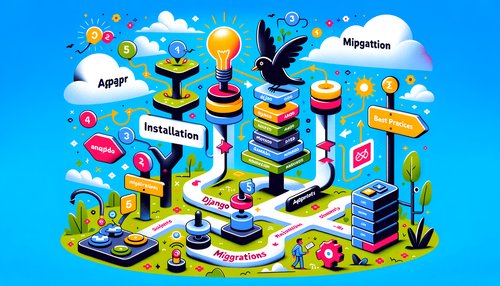Unlock the Secrets to High Performance Django Applications
Django is a powerful web framework for Python applications. It offers a wide range of features that help developers to build robust websites and applications quickly and easily. However, it can be difficult to get the most out of Django if you don’t understand how to optimize your code for performance. In this blog post, we’ll take a look at some of the best practices for optimizing Django applications for high performance.
1. Use the Django Debug Toolbar
The Django Debug Toolbar is a powerful debugging tool that can help you identify and fix performance bottlenecks in your application. It displays useful information such as the time taken to execute each request, the number of database queries executed, and allows you to profile your code for further optimization.
2. Use Caching
Caching is a great way to improve the performance of your Django application. Caching allows you to store frequently used data in memory or on disk, so that it can be quickly retrieved without having to query the database. Django provides an easy-to-use caching framework that can be used to cache views, templates, and other data.
3. Optimize Database Queries
Database queries can be one of the biggest performance bottlenecks in Django applications. It is important to optimize your database queries in order to avoid unnecessary queries and improve performance. Django provides a number of tools to help you optimize your database queries, such as the QuerySet API and the Django ORM.
4. Use Template Caching
Template caching is a great way to improve the performance of your Django application. By caching templates, you can avoid having to regenerate the same template multiple times, which can significantly reduce the amount of time it takes to generate a page. Django provides a template caching framework that can be used to cache templates.
5. Use a Content Delivery Network (CDN)
A content delivery network (CDN) is a great way to improve the performance of your Django application. A CDN is a network of servers located around the world that can deliver your content quickly and efficiently. By using a CDN, you can ensure that your content is delivered quickly and reliably to users, regardless of their location.
Conclusion
By following the best practices outlined in this blog post, you can unlock the secrets to high performance Django applications. By using the Django Debug Toolbar, caching, optimizing your database queries, using template caching, and using a CDN, you can ensure that your application is running at its best.
Recent Posts

Unlocking the Power of Terraform: Mastering Conditional Expressions for Smarter Infrastructure Automation

Unveiling the Future: Navigating the Public Interface of Apache Airflow for Streamlined Workflow Management
Apache Airflow
Mastering Workflow Automation: Unconventional Apache Airflow How-To Guides for the Modern Data Enthusiast
Apache Airflow
Mastering the Cloud: Unveiling AWS CloudFormation Best Practices for Seamless Infrastructure Management



